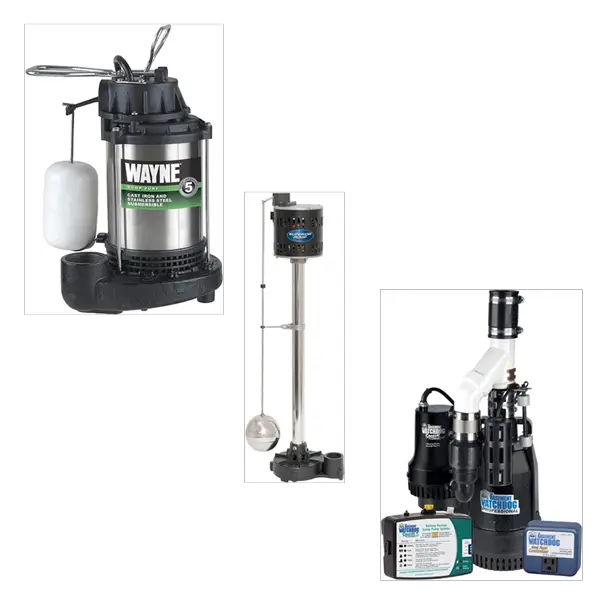When you purchase a new home, numerous factors must be considered to ensure it’s safe, comfortable, and efficient. One critical aspect often overlooked is the need for a sump pump.
A sump pump can be a crucial addition, particularly if your new home is prone to flooding or has a basement.
This guide will walk you through everything you need to know about choosing the right sump pump for your new home, ensuring your property stays dry and protected.
Table of Contents
Understand the Purpose of a Sump Pump
A sump pump is designed to remove water accumulating in a sump basin, typically found in a home’s basement or crawl space.
This water can come from rain, natural groundwater, or plumbing leaks. Without a sump pump, water could flood the basement, leading to potential damage to your property and possessions.
Additionally, a wet basement can create a breeding ground for mold and mildew, posing health risks.
Of course, even if you take preventive measures, things can still go wrong, and your basement can get flooded. Therefore, we recommend using USA Moving Reviews, a database of licensed movers, to find an experienced and reliable team in your area. Thus, in case of an emergency, they can quickly pack all your belongings and transport them into storage to avoid water damage.

Types of Sump Pumps
There are two primary types of sump pumps: submersible and pedestal.
Submersible Sump Pumps
Submersible sump pumps are designed to be placed inside the sump pit, fully submerged in water. They are quieter and generally more efficient because the water around them helps to cool the motor, preventing overheating.
Submersible pumps are also less obtrusive, making them a good option if you have limited space in your basement.
- INDOOR USE ONLY – This 3/4 HP WAYNE basement sump pump is perfect to keep your basement dry during heavy water flow. Whether it’s rain, snow melting, etc. WAYNE model CDU980E can pump up to 5,490 GPH to keep your basement dry.
- TOUGH AND DURABLE – Corrosion-resistant stainless steel motor housing and fasteners come with a cast-iron volute that provides long life in tough sump pump applications.
- EFFICIENT DESIGN – The top suction design eliminates air lock and minimizes clogging from any debris in the bottom of the sump pit. Easy to install in about 15 minutes with no need to drill a weep hole!
- ADDITIONAL FEATURES – 1-1/2” NPT discharge for compliance with building codes.
- QUALITY YOU DESERVE – Proudly assembled in the USA for quality you can trust. Warrantied for 5 years for dependable, efficient, & ultra-quiet performance.
Pedestal Sump Pumps
Pedestal sump pumps have a motor that sits above the sump pit, with just the pumping mechanism sitting in the water. These pumps are louder than submersible pumps because the motor is exposed.
However, they are easier to access for maintenance and repairs, which can be a significant advantage.
- 1/2 HP Sump pump moves up to 3600-gallons per hour; Will handle liquids up to 180-degrees Fahrenheit
- Rugged stainless steel and cast iron construction
- Non-corrosive, solid steel drive shaft, float ball, and impeller; 1-1/2 inch NPT discharge
- Features: Fully adjustable automatic switch, Metal switch arm for strength and durability, 10-foot power cord, cULus Listed, CSA Certified
- Superior Pumps are Built to Last, engineered with quality components and are 100% factory tested
Size Your Sump Pump
Choosing the right size sump pump is crucial to ensure it can handle the volume of water in your basement. Pumps are rated by horsepower (HP), with common ratings being 1/3 HP, 1/2 HP, and 3/4 HP.
A pump with 1/3 HP is typically sufficient for most homes, but if your basement has a history of flooding or you live in an area with high groundwater levels, you may need a more powerful pump.
Key Features to Consider
When choosing a sump pump for your new home, several key features must be considered to ensure you get the best performance and reliability.
Automatic vs. Manual Operation
Most modern sump pumps are automatic, with a float switch that activates the pump when water reaches a certain level. Manual pumps require you to turn them on and off, which can be less convenient and effective, particularly if flooding occurs while you’re away from home.
Battery Backup
Power outages often accompany severe storms, which is precisely when you need your sump pump the most. A battery backup system will keep the sump pump running even if the power goes out, providing peace of mind and added protection.
Alarm Systems
Some sump pumps come equipped with alarm systems that alert you when the water level in the sump pit is dangerously high. This feature can be invaluable, giving you time to address potential issues before they result in flooding.
- ½ HP energy-efficient Permanent Split Capacitor (PSC) primary pump can save money on your electric bills
- Primary pump capacity 3,540 GPH at a 10 ft. lift and 4,400 GPH at 0 ft. lift. Backup system capacity 1,850 GPH at 10 ft. lift and 2,600 GPH at 0 ft. lift
- Includes a WiFi-capable battery backup system that provides 24-hour-a-day monitoring of pump, power and battery conditions; backup controller will sound an alarm, illuminate a warning light and describe what to do for easy maintenance
- Allows for connection to a Basement Watchdog CONNECT Module (BW-WiFi—a SEPARATE PURCHASE), giving you real-time alerts via text, email, push notification or through the Basement Watchdog free app
- Provides days of intermittent pumping power on a single battery charge and is compatible with both maintenance-free AGM and wet-cell batteries. Connect two batteries in parallel for double the runtime.
Installation Considerations
Installing a sump pump is a task that a savvy DIYer can tackle, but it’s often best left to professionals to ensure it’s done correctly. Proper installation is crucial to the pump’s performance and longevity.
Location of the Sump Pit
The sump pit should be located in the lowest part of your basement, where water naturally accumulates. Ensuring the pit is deep and wide enough to accommodate your chosen pump is also important.
Discharge Line
The discharge line expels water from the sump pump. Position this line away from your home’s foundation to prevent the water from cycling back into the basement. It’s also wise to include a check valve in the discharge line to prevent backflow.
Alt. text: A plumber in a fluorescent vest holding a wrench
Caption: Consider hiring a professional to install a sump pump for your new home
Maintenance Tips
Regular maintenance ensures your sump pump remains in good working order. Periodically check the pump for debris or obstructions, and test the float switch to ensure it activates the pump correctly.
It’s also a good idea to clean the sump pit and inspect the discharge line for any signs of blockage or damage.
Alt. text: Tools aligned next to each other on the floor
Caption: Regular maintenance is key to ensuring your sump pump remains in good working order
Common Issues and Troubleshooting
Sump pumps are generally reliable, but like any mechanical device, they can experience issues. Common problems include the pump not turning on, running continuously, or failing to remove water effectively.
The Pump Won’t Turn On
If your sump pump doesn’t turn on, the issue could be a tripped circuit breaker, a faulty float switch, or a clogged pump. Checking these components can often resolve the problem.
The Pump Runs Continuously
A sump pump that runs continuously can be caused by a stuck float switch or a pump that’s too small for the volume of water it needs to handle. In some cases, adjusting the float switch or upgrading to a more powerful pump can resolve this issue.
The Pump Isn’t Removing Water
If your sump pump is running but not removing water, the problem could be a clogged intake screen, a blocked discharge line, or a malfunctioning check valve. Cleaning or replacing these components can often restore proper function.
Conclusion on Choosing the Best Sump Pump for Your New Home
Choosing the right sump pump for your new home is crucial in protecting your investment and ensuring your basement remains dry and safe.
By understanding the different types of sump pumps, considering key features, and knowing how to maintain and troubleshoot your pump, you can make an informed decision that meets your needs.
Whether you tackle the installation yourself or hire a professional, having a reliable sump pump can provide peace of mind and protect your home from water damage for years to come.

Author at Best Sump Pumps
The first time I helped to install a drain tile and basement sump pump system was 1978.
Since then I have worked for a city water utility where I worked with and maintained pumps.
My rental properties and personal homes all needed sump pumps.
As a modular home dealer/builder, those new homes needed sump pumps.
I put that experience to good use by providing reliable, useful, and practical advice on buying, using, and maintaining sump pumps.



